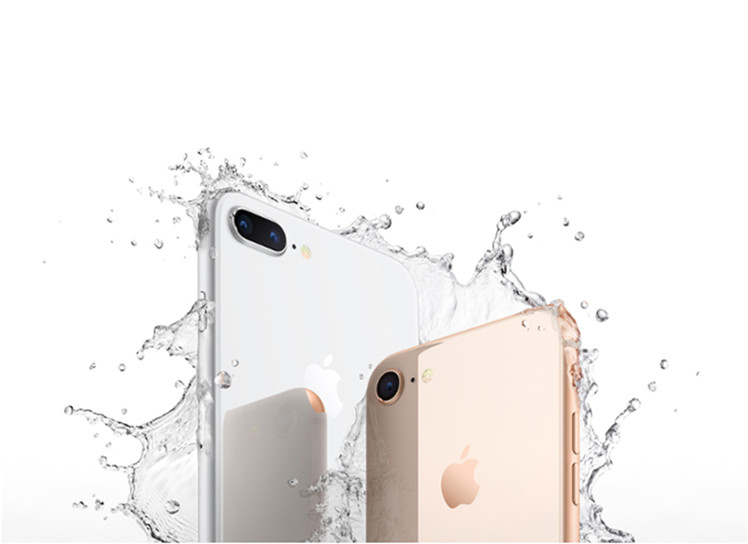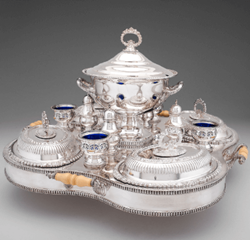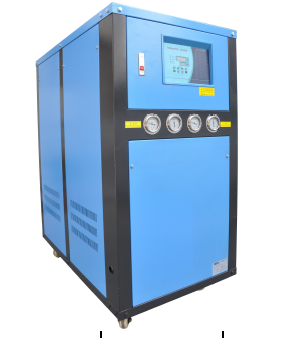Although the latest iphone8 switch to the glass panel. But anodic oxidation treatment in the contemporary application can be described as more and more extensive, anodizing treatment is worth learning from us, and now we have a better understanding of anodic oxidation.
First, the surface pretreatment; no matter what method of processing aluminum and products, the surface will be different degrees of dirt and defects, such as dust, metal oxides (natural or high temperature formation of alumina film), residual Oil, asphalt signs, manual handprint (the main components are fatty acids and nitrogen compounds), welding flux and corrosion salts, metal burrs, a slight scratches and so on. So before the oxidation process, the chemical and physical methods of the surface of the product necessary cleaning, so that exposed pure metal matrix to facilitate the oxidation of coloring smoothly, so as to obtain a solid bond with the matrix, color and thickness to meet the requirements and have The best corrosion resistance, wear resistance, weather resistance and other good performance of the artificial film.
Second, the anodized;
Aluminum surface of the natural alumina is both soft and thin, poor corrosion resistance, can not be an effective protective layer is not suitable for coloring. Artificial oxide film is mainly applied chemical oxidation and anodic oxidation. Chemical oxidation is aluminum products in weak alkaline or weak acid solution, part of the matrix metal reaction, so that the surface of the natural oxide film thickening or produce some other passivation film treatment process, commonly used chemical oxide film with chromic acid film And phosphoric acid film, which are both thin adsorption and good, can be colored and sealing treatment, Table 3 describes the aluminum chemical oxidation process. Chemical oxide film compared with the anodic oxide film, the film is much thin, corrosion resistance and hardness is relatively low, and not easy to color, coloring after the poor light resistance, so the metal aluminum color and color only describes the anodizing treatment.
Third, other anodizing;
1, Oxalic acid anodizing;
Most of the factors affecting the anodic oxidation of sulfuric acid is also applicable to anodic oxidation of oxalic acid, oxalic acid anodic oxidation can be used DC, AC or AC-DC superposition. Under the same conditions, the film is soft and the elasticity is low. Under the same conditions, the corrosion resistance of the film increases with the increase of the AC component, but the color is deepened , Coloring worse than the sulfuric acid film. The free oxalic acid concentration in the electrolyte is 3% -10%, usually 3% -5%, consumes 0.13-0.14g per A? H in the oxidation process, and 0.08-0.09g of aluminum per The electrolyte produces aluminum oxalate, which consumes 5 times the amount of aluminum oxalic acid. The concentration of aluminum ions in the solution is controlled below 20 g / L, and when the solution contains 30 g / L of aluminum, the solution fails.
Oxalic acid electrolyte is very sensitive to chloride, anodized aluminum or aluminum alloy, the chloride content should not exceed 0.04-0.02g / L, the solution is best prepared with pure water. Electrolyte temperature increases, film thinning. In order to obtain a thick film, the pH of the solution should be increased. DC anodic oxidation with lead, graphite or stainless steel to do the cathode, the area ratio with the anode (1: 2) – (1: 1) between. Oxalic acid is weak acid, low dissolving power, aluminum oxide, must be cooled products and electrolytes. The thickness and color of the oxalic acid layer vary depending on the composition of the alloy. The thickness of the pure aluminum film is yellowish or silvery white, and the alloy is dark as yellow and brass. After oxidation of the film after cleaning, if not stained with 3.43 × 10 4 square Pa pressure steam sealing 30-60 minutes.
2, Chromic acid anodizing;
Chromic acid anodizing process. During the oxidation process should always be concentration analysis, timely add chromic anhydride. Electrolytic cathode materials can be lead, iron, stainless steel, the best yang area ratio (5: 1) – (10: 1). When the trivalent chromium ions in the solution, it can be electrolyzed to oxidation of hexavalent chromium ions. The sulfate content of the solution is more than 0.5%, the anodic oxidation effect is not good, the sulfate ion can be added barium hydroxide or barium carbonate for a long time to produce barium sulfate precipitation. The chloride content in the solution should not exceed 0.2 g / L. When the chromium content in the solution exceeds 70 g / L, the solution should be diluted or replaced. Chromic acid anodic oxidation of the voltage cycle of the anodic oxidation method or constant voltage anodic oxidation (rapid chromic acid method) .
3, Hard (thick film) anodizing;
Hard anodic oxidation is aluminum and aluminum alloy surface to produce thick and hard oxide film of a process. The maximum thickness of the hard film can reach 250μm, the hardness of the film formed on pure aluminum is 12000-15000MPa, the alloy is generally 4000-6000MPa, which is almost the same as that of the hard chrome plating. , The porosity of the hard film is about 20%, lower than that of the conventional sulfuric acid film.
4, Porcelain anodic oxidation;
Porcelain anodized aluminum and aluminum alloy in oxalic acid, citric acid and boric acid titanium salt, zirconium salt or thorium salt solution in anodic oxidation, the solution of salt metal hydroxide into the oxide film pores , So that the surface of the article is displayed with an opaque and dense enamel or a similar plastic appearance with a special gloss. The porcelain anodic oxidation process is basically the same as conventional sulfuric acid anodizing, except that the porcelain anodic oxidation is in the high DC voltage (115-125V) and the higher solution temperature (50-60 degrees), the electrolyte is often stirred , Often adjust the pH to make it in the range of 1.6-2 conditions.





